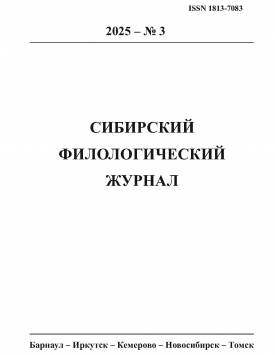Does the Forest Nenets language as spoken in Khalyasavey village exhibit phonological accent?
This paper investigates whether the Forest Nenets language, in particular the Khalyasavey village dialect, possesses a unique colloquial accent and determines whether it has prosodically emphasized vowels. In order to answer these questions, an analysis was conducted on the duration and intensity of vowels in the field recordings from the village of Khalyasavey in 2012. The analysis indicated that the duration and intensity occasionally distinguish syllables, suggesting the absence of classical stress in contemporary Forest Nenets. Nevertheless, the different marking of maximal intensity between long and short high Proto-Nenets vowels was established. Simultaneously, their function extends to indicating different syllables within separate pronunciations by the same speaker. Generally, the vowel in the initial syllable is characterized by the maximum intensity, with the exception of words containing a short ĭ in the first syllable and about half of the words containing a short ŭ. The maximum duration, however, often indicates the open vowel of the second syllable. It is noteworthy that M. K. Amelina describes an analogous prosodic system for the Gydan dialect of the Tundra Nenets language. A parallel phenomenon, namely the concentration of maximum intensity on the initial syllable in most word forms, is likewise evident in other languages of this area. The observed absence of phonological stress in Forest Nenets may be attributable to the areal process of intensity fixation on the first syllable.
Keywords
Forest Nenets, field research, stress, experimental phonetics, duration, intensityAuthors
| Name | Organization | |
| Normanskaja Julia V. | Ivannikov’s Institute for System Programming of the Russian Academy of Sciences; Institute of Linguistic of the Russian Academy of Sciences | julianor@mail.ru |
References

Does the Forest Nenets language as spoken in Khalyasavey village exhibit phonological accent? | Sibirskii Filologicheskii Zhurnal - Siberian Journal of Philology. 2025. № 3. DOI: 10.17223/18137083/92/13
